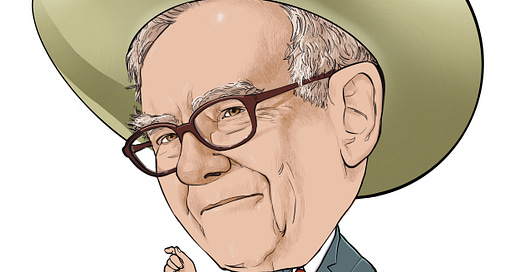The Greening of Warren Buffett (& one of his favorite investments)
“There can be no denying that one of the best trades of the past month has been uranium. The Sprott Physical Uranium Trust ETF has run from $16 during mid-summer, to $20.25 on Friday.” -The MacroTourist, Kevin Muir (the prices he mentions are in Canadian dollars)
“While some are studying the potential to append existing nuclear power plants with small DAC setups, why not explore building nuclear reactors for the sole purpose of scrubbing carbon from the atmosphere?” -The highly popular financial newsletter author, Doomberg, referring to Direct Air Capture (DAC) of carbon emissions, in his 9/1/2023 article
Champions Section
The fact that the long overlooked midstream energy infrastructure sub-sector has produced a total return of almost 17% this year is definitely a Haymaker-pleaser. This is in addition to returns of 39.85% in 2021 and 30.54% 2022. To be fair, it’s also in the wake of a disastrous 2020 when oil prices collapsed due to the Covid lockdowns of most of the global economy. (Did we really have to do that? Sweden didn’t and they emerged from the pandemic with a less severe mortality rate than most developed countries.)
It's also in the interest of accuracy to point out that this segment of the energy industry, often known by the initialsim MLPs (Master Limited Partnerships), was a dog well before Covid went viral. From 6/30/2014 until 12/31/19, the main MLP index had a negative return of 37%. Ouch! (Mid-2014 was the peak in what had been a monster bull run for this group over the prior 15 years.) That red ink was despite the 6%-type distributions its constituents were paying out — at least until the Covid collapse caused most of them to slash their distributions.
Not yet a paid Haymaker subscriber? Complete the brief survey linked below and we’ll set you up with a 90-day trial at no cost.
Fortunately, since then, payouts have been rising again. Yet, in most cases they are still not back up to what these entities were distributing to unitholders pre-2015. A commendable exception to that is this industry’s class act, Enterprise Products Partner, EPD; remarkably, it has managed to increase its distribution every quarter since it went public in 1998.
While EPD is a personal favorite of mine, it is not the subject of this Haymaker edition. Instead, I am intrigued by the price weakness this year in a midstream name that I previously highlighted, in my usual discreet way.
Before I get into any details, I realize most people don’t know what midstream energy infrastructure companies do – thus, simplistically, think pipelines. However, most own and operate a wide array of assets that are essential to bringing oil and natural gas from the wellhead to distribution points, such as gas stations and utilities, in addition to industrial users such as producers of polyethylene, i.e., plastics. (Do you remember that old line from The Graduate, “Plastics. There's a great future in plastics.”? As things turned out, it actually was great advice from Mr. McGuire to Benjamin Braddock.)
Considering their fossil-fuel orientation, midstream energy companies have had a checkered relationship with ESG investors. However, that is changing. This is in no small part due to the belated awareness America would be in the same precarious position as is Europe without such a brawny domestic oil and gas industry. (Personally, I think the Continent is about to find out it’s much more vulnerable than is currently believed)
But there’s more to the revival story. Pipelines are beginning to be viewed as eventual hydrogen conduits. That element is viewed most favorably by the ESG community, even though it is not ready for prime time. What is more imminent is the rapidly growing energy micro-industry of carbon capture.





